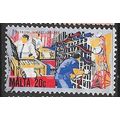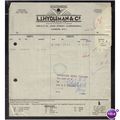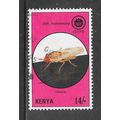Fungus / Fungi - Dryad's Saddle Fungus / mushroom - UK postcard c.1980s
- Condition : Used
- Dispatch : 2 Days
- Brand : None
- ID# : 105084623
- Quantity : 1 item
- Views : 1926
- Location : United Kingdom

- Seller : justthebook (+1703)
- Barcode : None
- Start : Mon 06 May 2013 19:50:46 (EDT)
- Close : Run Until Sold
- Remain : Run Until Sold
Checks/Cheques
 for 1 item(s) edit
for 1 item(s) edit
Shipping Calculator
More Listings from This Seller view all
Seller's Description
- Postcard
- Picture / Image: Dryad's Saddle Fungus
- Publisher: Lindsey County Federation of Women's Institutes / printed by Judges of Hastngs
- Postally used: no
- Stamp: n/a
- Postmark(s): n/a
- Sent to: n/a
- Notes / condition: rare subject
Please ask if you need any other information and I will do the best I can to answer.
------------------------------------------------
Postage & Packing:
UK (incl. IOM, CI & BFPO): 99p
Europe: £1.60
Rest of world (inc. USA etc): £2.75
No additional charges for more than one postcard. You can buy as many postcards from me as you like and you will just pay the fee above once. (If buying postcards with other things such as books, please contact or wait for invoice before paying).
Payment Methods:
UK - PayPal, Cheque (from UK bank) or postal order
Outside UK: PayPal ONLY (unless otherwise stated) please. NO non-UK currency checks or money orders (sorry).
NOTE: All postcards are sent in brand new stiffened envelopes which I have bought for the task. These are specially made to protect postcards and you may be able to re-use them. In addition there are other costs to sending so the above charge is not just for the stamp!
I will give a full refund if you are not fully satisfied with the postcard.
----------------------------------------------
Text from the free encyclopedia WIKIPEDIA may appear below to give a little background information (internal links may not work) :
*************
Polyporus squamosus is an basidiomycete bracket fungus, with common names including Dryad's saddle and Pheasant's back mushroom.[2] It has a widespread distribution, being found in North America, Australia, Asia, and Europe, where it causes a white rot in the heartwood of living and dead hardwood trees. The name ""Dryad's saddle"" refers to creatures in Greek mythology called Dryads who could conceivably fit and ride on this mushroom, whereas the pheasant's back analogy derives from the pattern of colors on the bracket matching that of a pheasant's back.
The species was first described scientifically by British botanist William Hudson in 1778, who named it Boletus squamosus.[3] It was given its current name in 1821 by Elias Magnus Fries in his Systema Mycologicum.[4]
This mushroom is commonly attached to dead logs or stumps at one point with a thick stem. Generally, the fruit body is 8–30 cm (3–12 in) across and up to 10 cm (4 in) thick. The body can be yellow to brown and has ""squamules"" or scales on its upper side. On the underside one can see the pores that are characteristic of the genus Polyporus; they are made up of tubes packed together closely. The tubes are between 1 and 12 mm long. The stalk is thick and short, up to 5 cm (2.0 in) long.[2] The fruit body will produce a white spore print if laid onto a sheet of paper. They can be found alone, in clusters of two or three, or forming shelves. Young specimens are soft but toughen with age. It is particularly common on dead elm and is also found on living maple trees.
This organism is common and widespread, being found east of the Rocky Mountains in the United States and over much of Europe. It is also found in Australia and Asia. It commonly fruits in the spring, occasionally during autumn, and rarely during other seasons. Many mushroom hunters will stumble upon this when looking for morels during the spring as both have similar fruiting times, and this fungus can grow to a noticeable size of up to 50 cm (20 in) across.[5] It plays an important role in woodland ecosystems by decomposing wood, usually elm, but is occasionally a parasite on living trees. Other tree hosts include ash, beech, horse chestnut, lime, maple, planetree, poplar, and willow.[6]
Edible. Young tender squamosus is best with the edges thinly sliced and fried in bacon grease. Young specimens are preferred, as they can become infested with maggots and become firm and inedible as they mature. Cookbooks dealing with preparation generally recommend gathering these while young, slicing them into small pieces and cooking them over a low heat. Some people value the thick, stiff paper that can be made from this and many other mushrooms of the genus Polyporus. The mushroom's smell resembles watermelon rind.[2]
type=printed postcards
theme=other postcards
sub-theme=fungi
number of items=single
period=1945 - present
postage condition=unposted
Listing Information
| Listing Type | Gallery Listing |
| Listing ID# | 105084623 |
| Start Time | Mon 06 May 2013 19:50:46 (EDT) |
| Close Time | Run Until Sold |
| Starting Bid | Fixed Price (no bidding) |
| Item Condition | Used |
| Bids | 0 |
| Views | 1926 |
| Dispatch Time | 2 Days |
| Quantity | 1 |
| Location | United Kingdom |
| Auto Extend | No |



















